In the article below, we will learn the success story of Mr. Prabhakar, who successfully cultivated sapota/chikoo plants on his farm organically. Below we will learn about Mr. Prabhakar’s sapota/chikoo farm, organic cultivation details of the sapota crop in Mr. Prabhakar’s words, his experiences in growing sapotas, and the investments and profits involved in sapota farming.
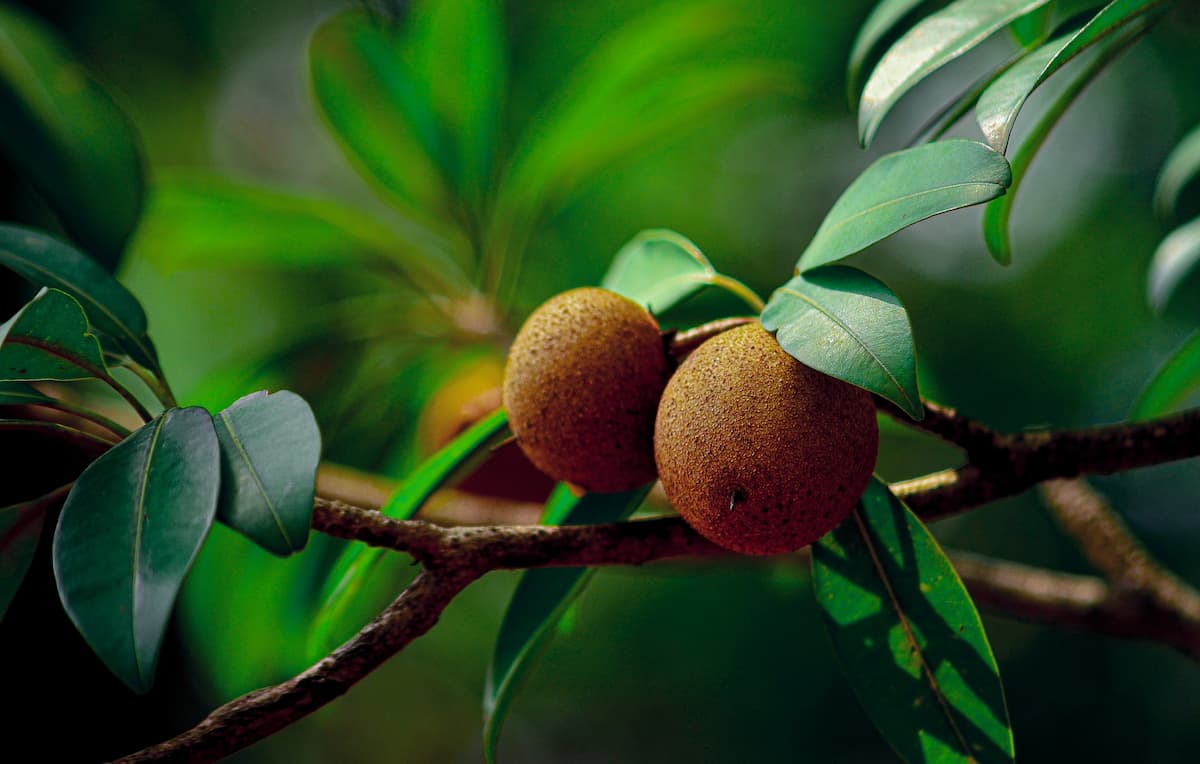
How this farmer earning 1 lakh from 2 acre organic Chikoo farming
Where is Sapota/Chikoo grown in India?
Native populations first developed it in Mexico and other South American nations. Mostly grown in India, it is known by its common name, Chiku. In chewing gums, its primary use is as a source of latex. Most of it is produced in the Indian states of Karnataka, Maharashtra, Tamil Nadu, Kerala, Andhra Pradesh, and Gujarat. The yearly yield of sapota is 5,45,000 metric tonnes, grown on a total area of 65,000 acres. The berry-like fruit of this plant is home to a cluster of three to five dark, shiny seeds.
How to prepare land for Sapota cultivation?
Before you plant anything, plow the soil to a depth of 30-45 cm and make sure it’s level. Because it takes so long for the plants to mature and create the canopy, an initial spacing of just 6 × 6 m is enforced. After the ground has been worked, square holes measuring 90 cm on a side are excavated. These cavities are exposed to light for two to three weeks. The top and subsoil should be stacked in two piles when filling the pits.
Before adding the subsoil, FYM, and superphosphate @ 1 kg to the pits, the topsoil is added. Adding 100 g of lindane powder per pit has been shown to reduce termite populations significantly. From June to late fall, planting takes place. For planting, we use sapota grafts. A graft’s root ball must be situated in the precise middle of the hole. All graft unions should be kept above ground (at least 15 cm above the ground).
Strong winds can damage grafts. Therefore it’s important to prop them up with the help of the stalks. Young grafts are shielded from the sun by a layer of plastic sheets placed on top of the region. To prepare for planting, the polythene strip used to stabilize the graft junction must be removed one month beforehand. The same goes for any shoots that emerge below the graft site.
In case you missed it: How this Farmer is Earning 24 Lakh from Custard Apple Cultivation: 4 Acres Farming Sucess Story
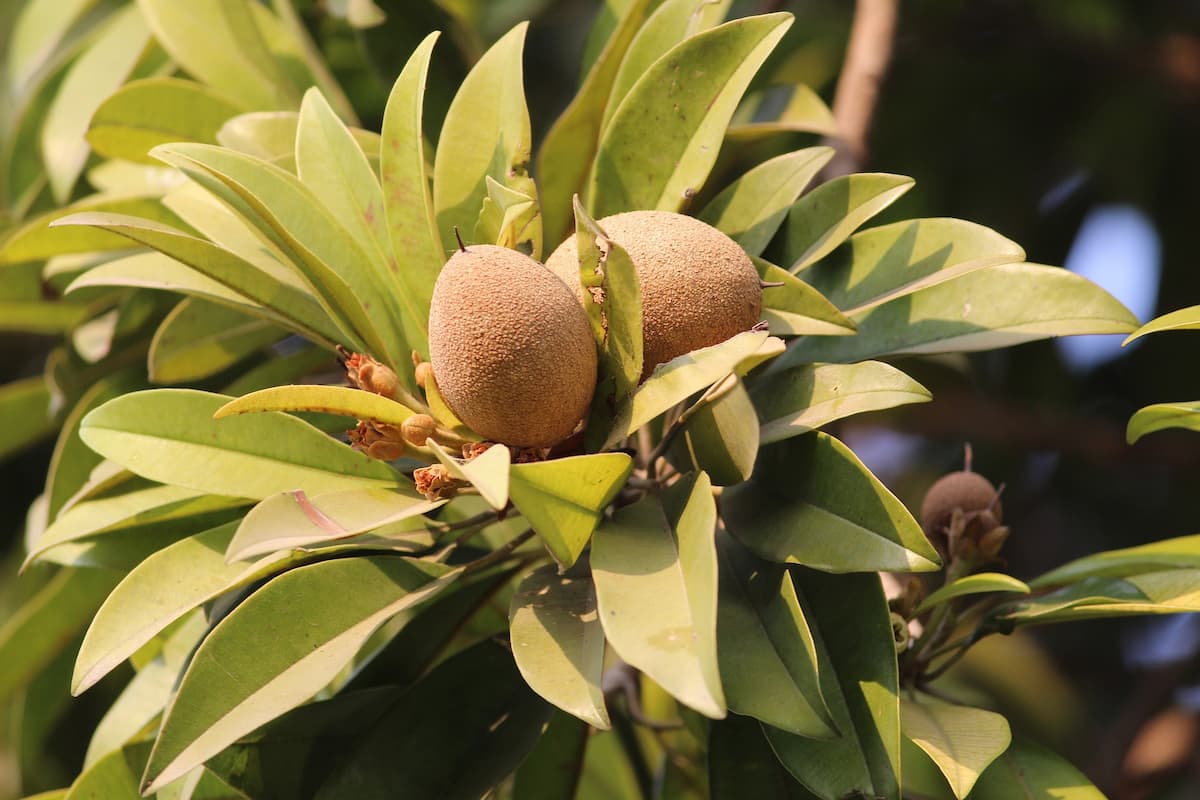
What are the ideal conditions for growing Sapota/Chikoo in India?
Sapota can be cultivated in many different types of soil. However, the best conditions for sapota farming are deep alluvial soil, sandy loam soil, and black soil with adequate drainage. The ideal pH range for growing sapota is between 6.0 and 8.0. Soil with a high calcium level and shallow clay content should be avoided for agriculture. Growing sapota successfully calls for well-prepared ground.
Two or three passes with a plow and a leveling implement are usually necessary to get a fine tilth. Irrigation is performed every 30 days during the winter and every 12 days during the summer. Drip irrigation is used because it may save as much water as 40 percent compared to conventional watering methods. Two drippers are placed 50 centimeters apart from the tree for the first two years; then four are placed 1 meter apart for the next three to five years.
The months of July, August, and September are harvest times. But don’t pick fruits that aren’t fully ripe yet. It is best to pick the fruit after its color has faded to a pale orange or potato color since this makes it less sticky and easier to remove from the tree. The average fruit yield for a mature tree is 250-1000 per year.
How long does Sapota take to grow?
Sapota begins to produce fruit in the third year after planting, but economic yields are not realized until the fifth year and beyond. Flowering occurs mostly in the months of October and November and February and March, while harvesting occurs primarily in January and February, March, May, and June. After blossoming, the sapota tree needs another four months to bear fruit. The fruits are either hand-picked or gathered using a unique harvester consisting of a long bamboo pole with a net bag attached to a circular ring.
In case you missed it: How this Farmer Made 42 Lakhs from 5 Acres of Organic Pomegranate Farming: Fruit Cultivation Sucess Story in India
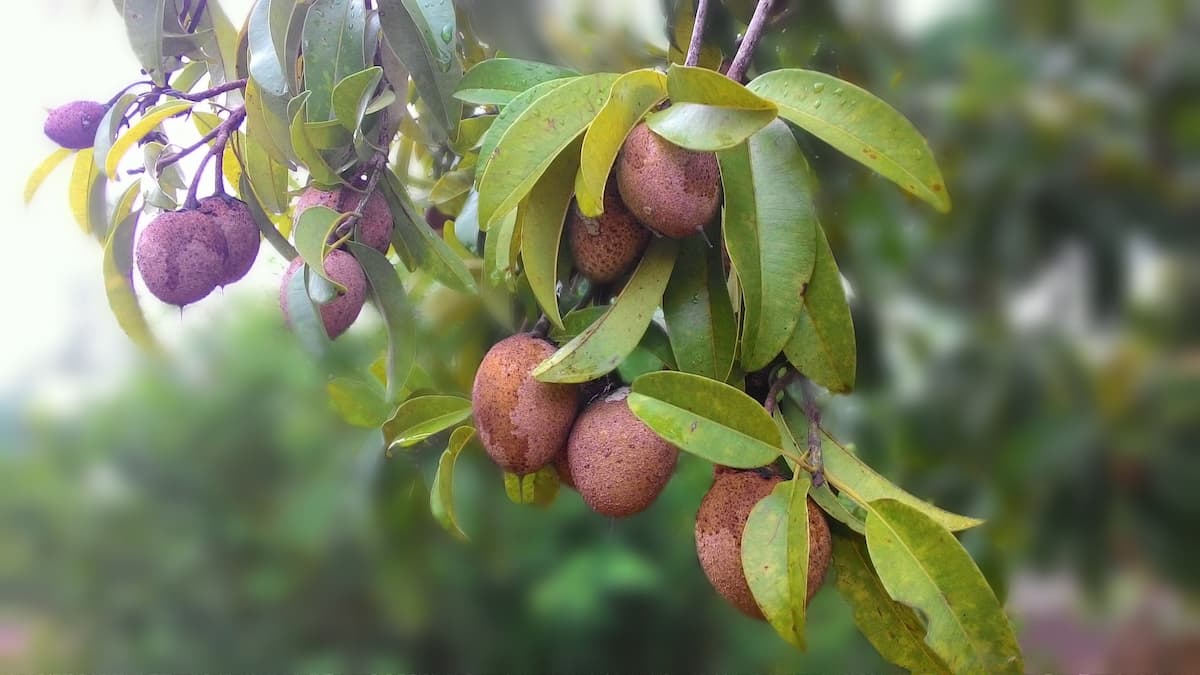
Beginning in the sixth year, harvests can be expected. For this reason, the project’s first four years might be spent on intercropping, such as vegetable cultivation. The yield of a high-density plantation rises from 4.0 tonne/acre in the fifth year to 6.0 tonne/acre in the seventh year. Production levels off at 8.0 tonnes/acre from the eighth to the fifteenth year.
How to store Sapota/Chikoo plants?
Although the fruits are very perishable, they can be kept in normal storage for up to a week after being picked. The storage life can be extended by 21-25 days at 200 C by eliminating ethylene and adding 5-10% CO2 to the storage environment. As a pre-packaging step, the fruits are dipped in a solution containing GA (300 ppm) and Bavistin (1000 ppm) to increase their stability during storage.
As a climacteric fruit, sapota requires a ripening process that is impossible to replicate in the wild. At 20-25 degrees Celsius, ethephon (1000 ppm) will ripen unripe fruits such that they can be kept for up to five weeks. They keep well for up to six weeks at 2-30 C and 90-95% RH after they’ve ripened.
In case you missed it: How this Farmer Making 60 Lakhs from 6 Acres Organic Grape Farm: Organic Grape Cultivation Sucess Story in India
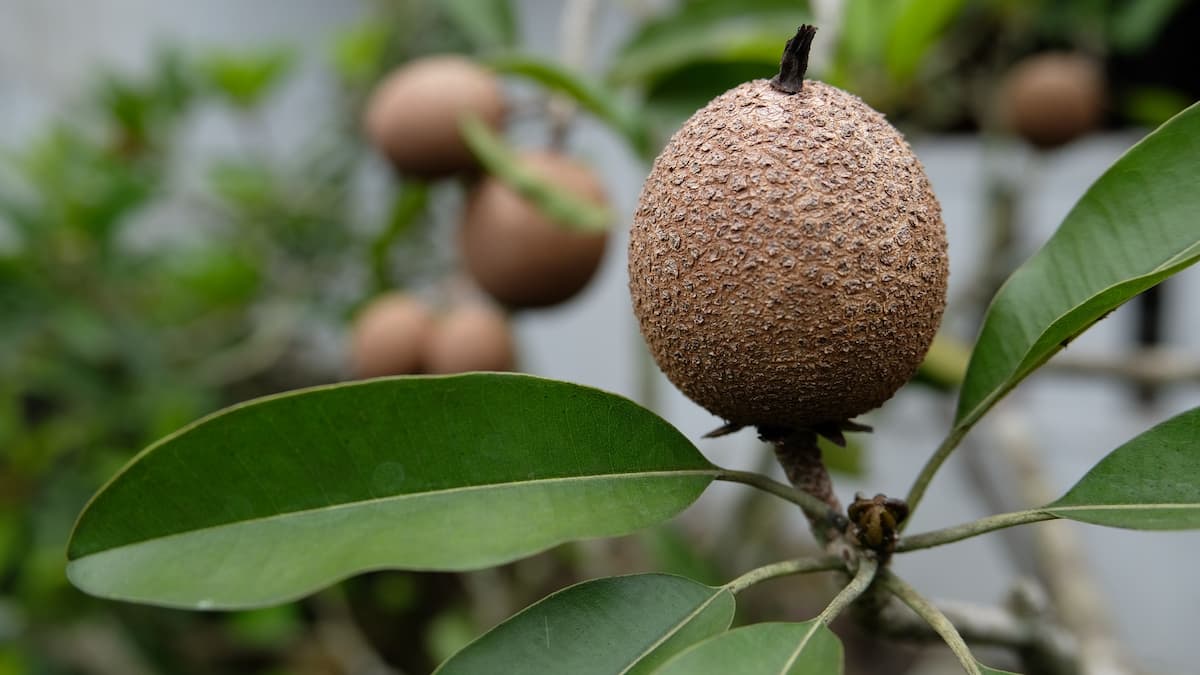
We use rice straws as cushioning and ethylene absorbers and store the fruit in cardboard boxes with a 10-kilogram capacity. Produce is transported from the farm to the local market using bamboo baskets lined with banana leaves and covered with a net. After harvest, certain crops are stored in wooden crates before being sent to city markets. Wood crates protect ripe fruits from injury, which also increase their value in urban markets.
The success story of Mr. Prabhakar
Mr. Prabhakar owns 10 acres of land, and he is from Sangareddy, Telangana. He cultivated different fruits on his 10 acres, such as custard apples, oranges, and guava. He was always interested in growing commercial fruit crops. He always wanted to grow long-period trees that can produce continuously for more than 20 years. After his oranges came to harvest, he cleared the orange crop in 2 acres and kept that land aside to grow any new long-term crop.
He then started investigating various fruit crops that would satisfy his criteria. He visited many new fruit farms and was amazed to see many commercial fruit production farms. Among them, sapota cultivation caught his interest. He visited various sapota farms and learned about the different ways and techniques to grow sapota crops. He was amazed to learn about the sapota fruits’ profit potential and how the sapota crop fits his criteria.
His land is a water-scarce, and sapota doesn’t take much water. When compared to oranges, sapota plants consume only 30% water. Once established, these trees can grow for more than 40 years. He then started his commercial sapota farm and earned huge profits when the trees came to harvest. How did this happen? Below we will learn about Mr. Prabhakar’s sapota farm, cultivation details of the sapota crop in Mr. Prabhakar’s words, his experiences in growing sapotas, and the investments and profits involved in sapota farming.
In case you missed it: How This Farmer Earned 24 Lakhs from His 3 Acres Avocado Farm: A Success Story of Small-Scale Fruit Cultivation in India
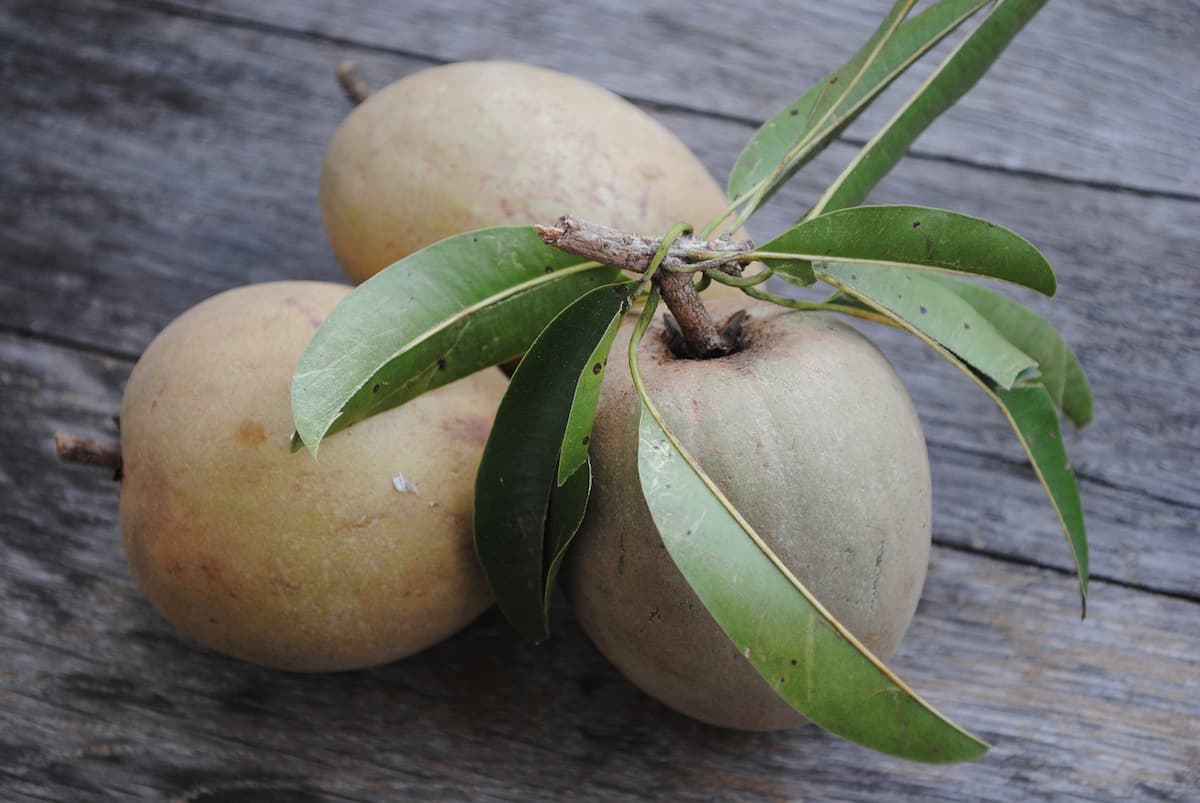
Organic Sapota/Chikoo cultivation details in Mr. Prabhakar’s words
Sapota plants are very easy to manage, says Mr. Prabhakar. There is very less maintenance. For land preparation, Mr. Prabhakar added chicken manure, cow manure, compost, animal manure, and neem cake. He says there is no need for additional fertilizers; one must be careful only during land preparation. You must be sure to add enough manure and compost into the soil. Also, Mr. Prabhakar’s land is scarce, and these plants don’t take water. However, he used a drip irrigation system on his land to water his plants.
He says that this watering system is ideal and very effective. A drip irrigation system prevents a lot of water waste. He bought his plants from Rajamundry, Andhra Pradesh. He says that one has to be careful while selecting plants. And he advises farmers to choose only healthy grafted plants for their farms. To be healthy, the mother plants should first be healthy for grafted plants. So one has to care that the grafted plants come from a healthy mother plant.
Mr. Prabhakar says that he planted nearly 65 plants per acre. Between each sapota plant, there should be a minimum of 33 feet gap. This is because these plants will afterward grow into huge trees, and there should be no competition for nutrients between the trees. He bought his plants at 30 rupees each. On his two acres of farm, he planted nearly 130 sapota plants. He says he planted in a high-density method, so he took only 25 feet distance between the plants. However, as mentioned above, the ideal distance should be 33 feet between each plant.
There is no high maintenance required for these plants, says Mr. Prabhakar. It even takes very less water compared to other fruit crops. For the first two years, one must take care of the plants and protect them from certain pests and diseases. He says that he used natural pesticides (Agnastram), sour curd, and cow urine to treat with pesticides organically. After the first two years, the plants gain immunity to fight diseases and pests.
The leaves that are dropped from these trees act as mulching agents for these trees. This mulching preserves the water content in the soil and prevents it from escaping into the air through evaporation. This mulching even prevents the weeds from growing, which helps reduce the competition for nutrients. Once the leaves fall on the ground, they act as manure and fertilizer, eventually decaying.
So there is no need for spraying certain pesticides and fertilizers for these plants, says Mr. Prabhakar. This makes his farm totally organic. Harvest starts in 5 years, but for commercial selling, the real harvest starts from the 8th year onwards, says Mr. Prabhakar. The average harvest per acre will range from 5 to 8 tons for the first years. This is Mr. Prabhakar’s 9th year, and he says he is expecting nearly 50 kgs from each tree.
In case you missed it: How this Farmer Earns 20 Lakhs from 3 Acres Organic Payaya Farm: A Success Story of Organic Fruit Cultivation in India
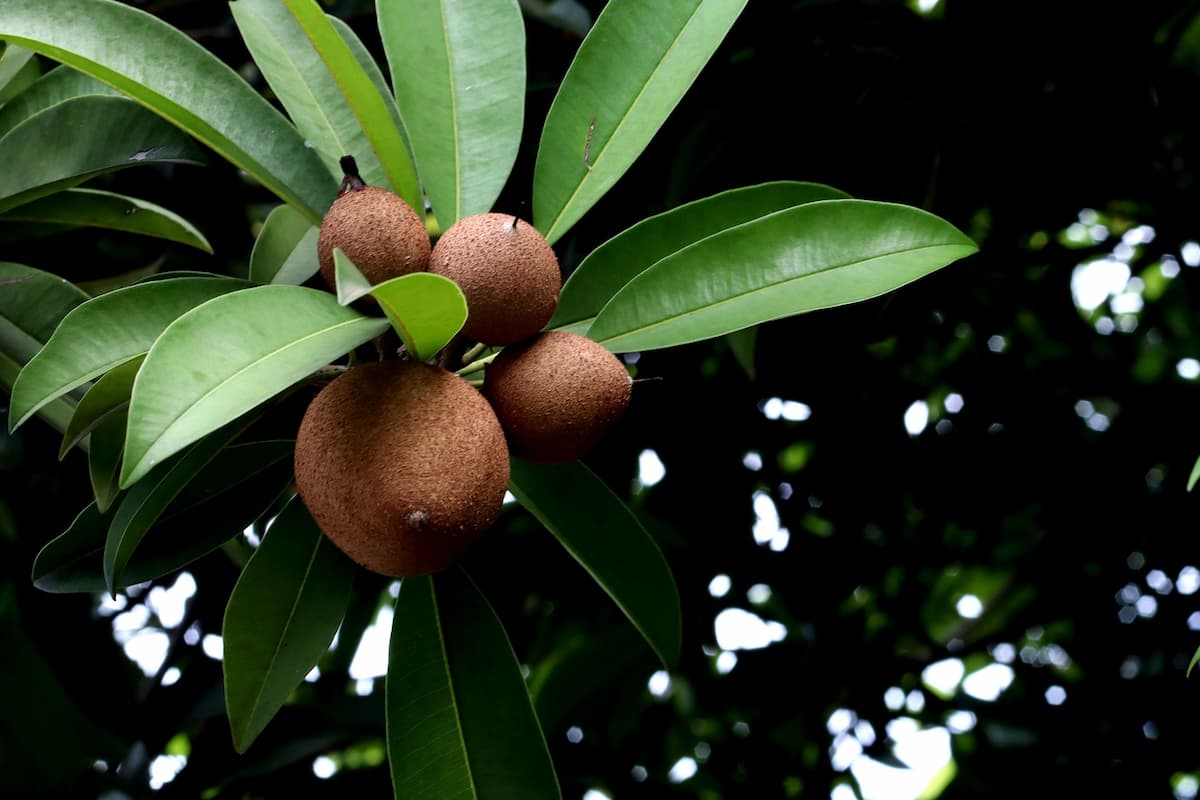
Investment and profit analysis of Mr. Prabhakar’s organic Sapota/Chikoo farm
Mr. Prabhakar says that the running investment for the 9th month is nearly 20,000 rupees per acre. That means it took him only 40,000 rupees for his two-acre farm, including miscellaneous costs. Regarding income, Mr. Prabhakar gets a minimum of 60 kgs of sapota from each plant. He sells this harvest at 20 rupees per kg directly to consumers from his retail outlets in his village and nearby towns. That means his income is nearly 1,60,000 rupees. As he cultivates organic sapotas, the demand for his fruits is higher.
If we take off investment from his income, his net profit would be nearly 1,40,000 rupees. This is a decent income for a farmer cultivating sapota on two acres. In this way, he is very happy that he is doing well in sapota farming, and he says that people who own small lands shouldn’t go for sapota cultivation as it is long-grown and market prices can fluctuate. You will get your harvest from the 8th year so choose your priorities. Mr. Prabhkar advises people with empty lands to cultivate such crops to make profits with very little investment.
- Types of Pesticides Used in Agriculture: A Beginner’s Guide
- Economical Aquaculture: A Guide to Low-Budget Fish Farming
- 15 Common Planting Errors That Can Doom Your Fruit Trees
- How to Make Houseplants Bushy: Effective Tips and Ideas
- Innovative Strategies for Boosting Coconut Pollination and Yield
- Pollination Strategies for Maximum Pumpkin Yield
- The Complete Guide to Chicken Fattening: Strategies for Maximum Growth
- Natural Solutions for Tulip Problems: 100% Effective Remedies for Leaf and Bulb-Related Issues
- Revolutionizing Citrus Preservation: Towards a Healthier, Greener Future
- Natural Solutions for Peony Leaf and Flower Problems: 100% Effective Remedies
- Maximizing Profits with Avocado Contract Farming in India: A Comprehensive Guide
- Natural Solutions for Hydrangea Problems: 100% Effective Remedies for Leaf and Flowers
- The Ultimate Guide to Choosing the Perfect Foliage Friend: Bringing Life Indoors
- From Sunlight to Sustainability: 15 Ways to Use Solar Technology in Agriculture
- The Ultimate Guide to Dong Tao Chicken: Exploring from History to Raising
- The Eco-Friendly Makeover: How to Convert Your Unused Swimming Pool into a Fish Pond
- Mastering the Art of Delaware Chicken Farming: Essentials for Healthy Backyard Flocks
- 20 Best Homemade Fertilizers for Money Plant: DIY Recipes and Application Methods
- How to Craft a Comprehensive Free-Range Chicken Farming Business Plan
- Brighten Your Flock: Raising Easter Egger Chickens for Beauty and Bounty
- How to Optimize Your Poultry Egg Farm Business Plan with These Strategies
- Subsidy for Spirulina Cultivation: How Indian Government Schemes Encouraging Spirulina Farmers
- Ultimate Guide to Raising Dominique Chickens: Breeding, Feeding, Egg-Production, and Care
- Mastering the Art of Raising Jersey Giant Chickens: Care, Feeding, and More
- Ultimate Guide to Raising Legbar Chickens: Breeding, Farming Practices, Diet, Egg-Production
- How to Raise Welsummer Chickens: A Comprehensive Guide for Beginners
- How to Protect Indoor Plants in Winter: A Comprehensive Guide
- Ultimate Guide to Grow Bag Gardening: Tips, Tricks, and Planting Ideas for Urban Gardeners
- Guide to Lotus Cultivation: How to Propagate, Plant, Grow, Care, Cost, and Profit
- Agriculture Drone Subsidy Scheme: Government Kisan Subsidy, License, and How to Apply Online
- Ultimate Guide to Raising Araucana Chickens: Breed Profile, Farming Economics, Diet, and Care
- Bringing Hydroponics to Classroom: Importance, Benefits of Learning for School Students
- Ultimate Guide to Raising Polish Chickens: Breed Profile, Farming Economics, Diet, and Care
- Ultimate Guide to Raising Australorp Chickens: Profile, Farming Economics, Egg Production, Diet, and Care
- Silkie Chicken Farming: Raising Practices, Varieties, Egg Production, Diet, and Care
- Sussex Chicken Farming: Raising Practices, Varieties, Egg Production, Diet and Care